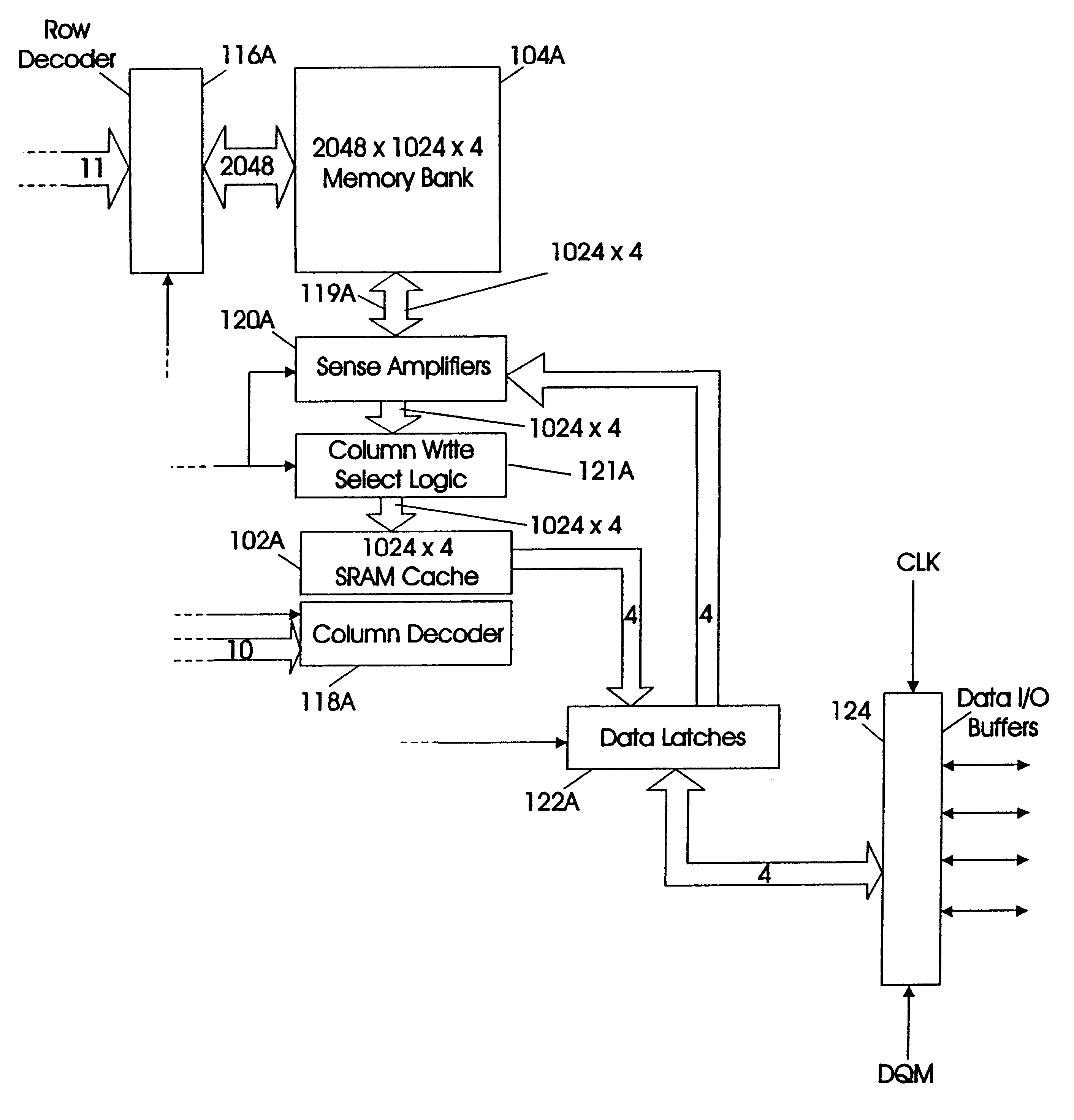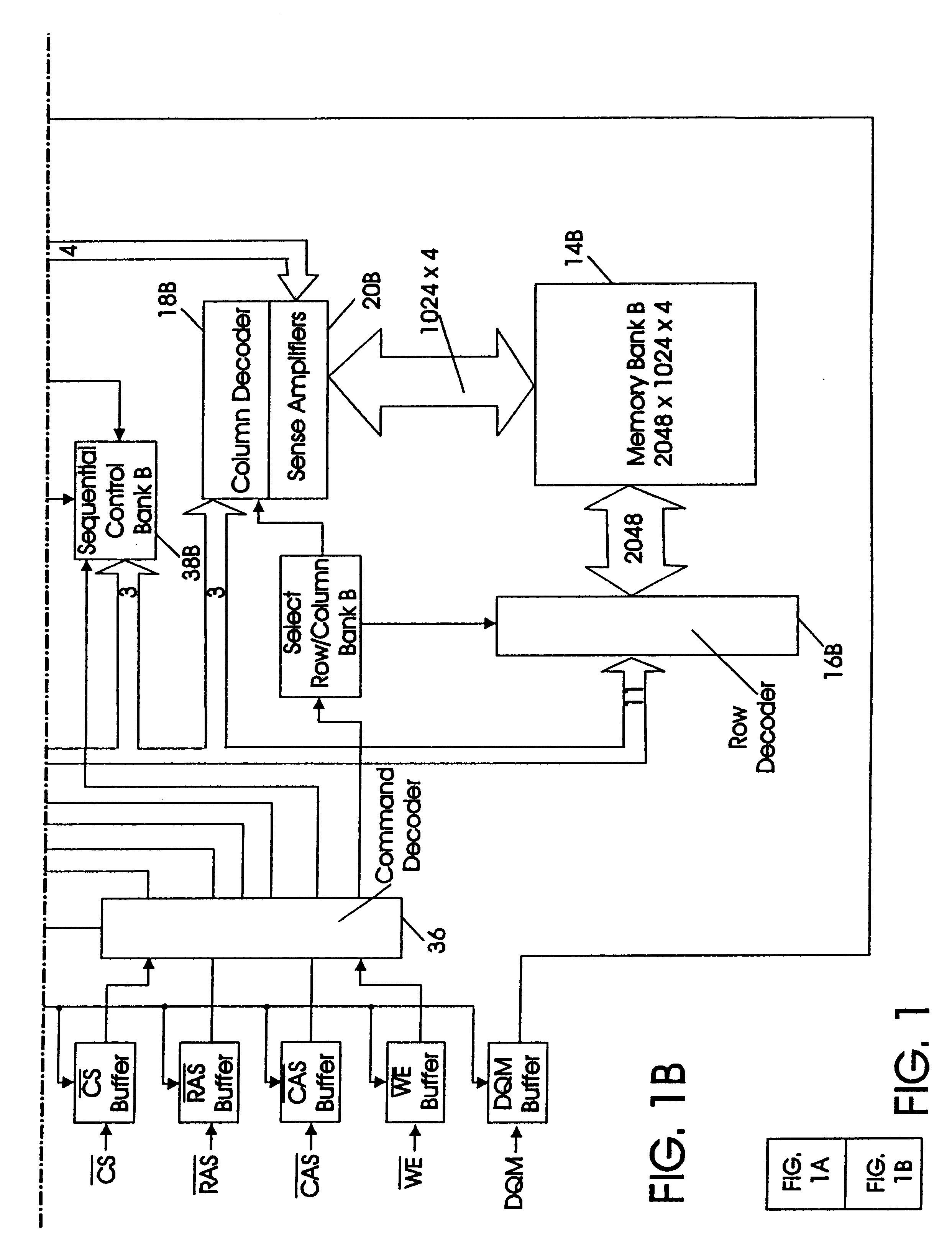Cached synchronous DRAM architecture having a mode register programmable cache policy
a cache policy and synchronous dram technology, applied in the field of caching sdram and caching policy, can solve the problems of only useful features, unable to and standard sdram does not improve the initial latency of page hits or misses
- Summary
- Abstract
- Description
- Claims
- Application Information
AI Technical Summary
Problems solved by technology
Method used
Image
Examples
Embodiment Construction
Because dynamic random access memories (DRAMs), and more particularly, synchronous DRAMs are known in the art, the present invention shall be described in particular to elements forming part of, or cooperating directly with, the invention. It is to be understood, however, that other elements not specifically shown or described may take various forms known to persons of ordinary skill in the semiconductor memory art. In addition, for clarity purposes, the present invention shall be described with respect to a 16Mbit SDRAM (2Mbit.times.4 I / O.times.2 Bank). Other SDRAM densities, organizations, and bank quantities are possible.
Referring now to FIG. 3, a block diagram of a cached SDRAM 100 according to the present invention is shown. An 8K bit integrated cache on the SDRAM 100 comprises a 4Kbit integrated static random access memory (row register) (102A, 102B) for each SDRAM bank (104A, 104B). As used in the following, the terms "cache," "integrated row register," and "static random acc...
PUM
 Login to View More
Login to View More Abstract
Description
Claims
Application Information
 Login to View More
Login to View More - R&D
- Intellectual Property
- Life Sciences
- Materials
- Tech Scout
- Unparalleled Data Quality
- Higher Quality Content
- 60% Fewer Hallucinations
Browse by: Latest US Patents, China's latest patents, Technical Efficacy Thesaurus, Application Domain, Technology Topic, Popular Technical Reports.
© 2025 PatSnap. All rights reserved.Legal|Privacy policy|Modern Slavery Act Transparency Statement|Sitemap|About US| Contact US: help@patsnap.com



